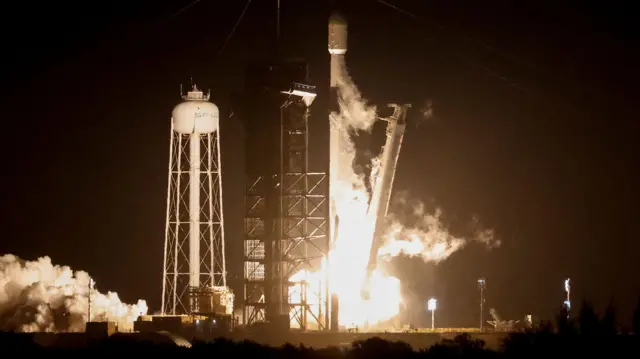Odysseus spacecraft's landing sequence will soon get under way - Nasapublished at 22:16 GMT 22 February 2024
The Nasa TV stream, which will show the Odysseus spacecraft's attempt at landing on the Moon, has begun in the last few minutes.
Admittedly, not much is happening yet, aside from a Nasa representative and someone from Intuitive Machines giving some detail about the mission.
They say the spacecraft's "autonomous" landing sequence will soon get under way - while a timer counting down to the big moment continues to tick down. The land time is currently predicted to be around 17:24 CST (23:24 GMT).
Intuitive Machines - a private company - has been contracted by the US space agency to carry six scientific instruments on board that will help study the Moon's surface.


